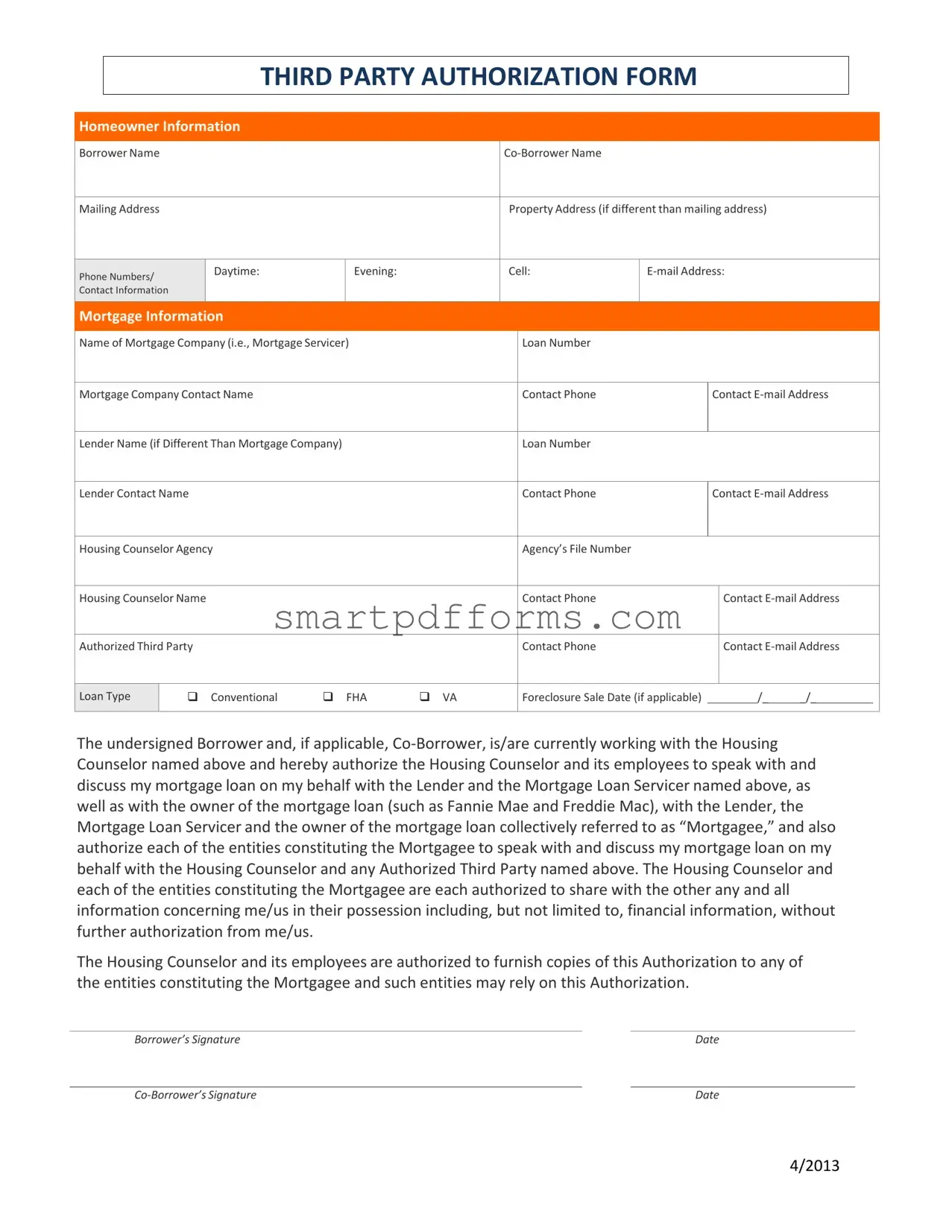Blank Third Party Authorization PDF Template
The Third Party Authorization form serves as a crucial document that authorizes a housing counselor or another designated third party to discuss a homeowner's mortgage loan with their lender, loan servicer, or the owner of the mortgage. This authorization facilitates open communication, allowing the designated third party to access and discuss all pertinent information regarding the homeowner's mortgage, including financial details, without the need for further approvals from the homeowner. For those navigating the complexities of mortgage management, filling out this form can significantly streamline communications with lenders and servicers.
Interested in simplifying your mortgage discussions? Click the button below to fill out your Third Party Authorization form.

